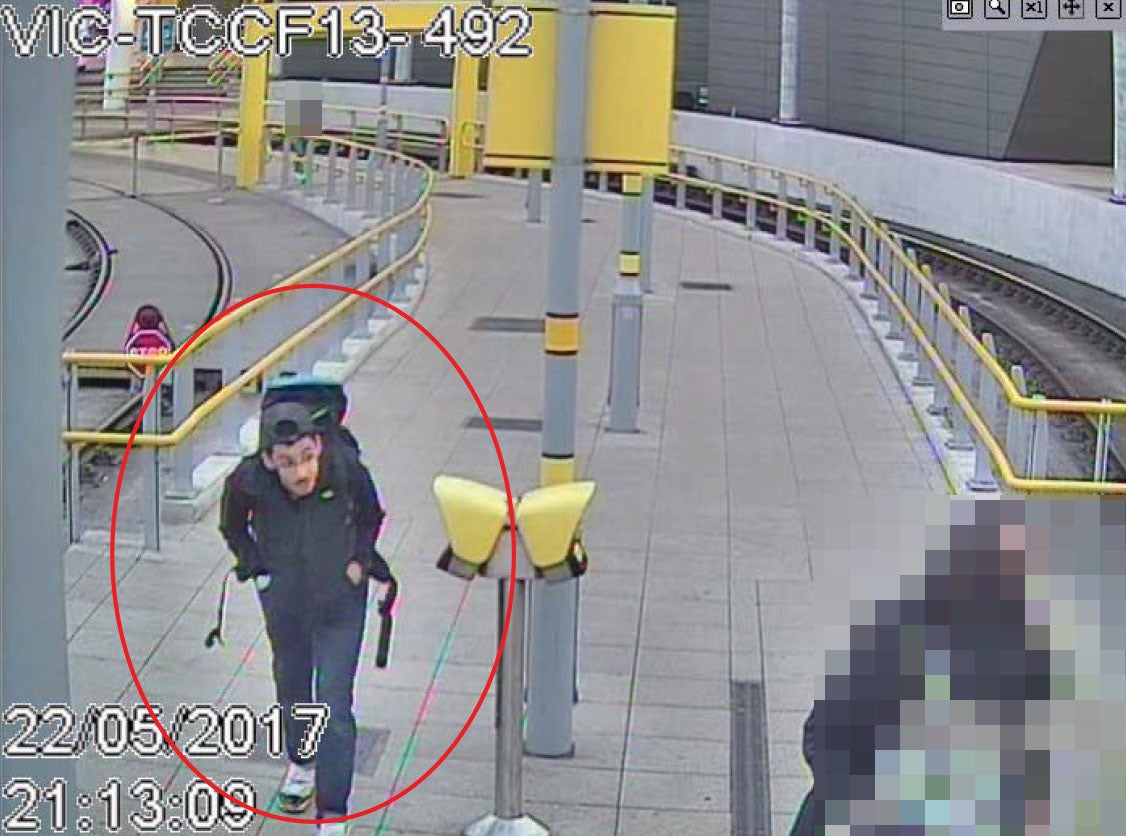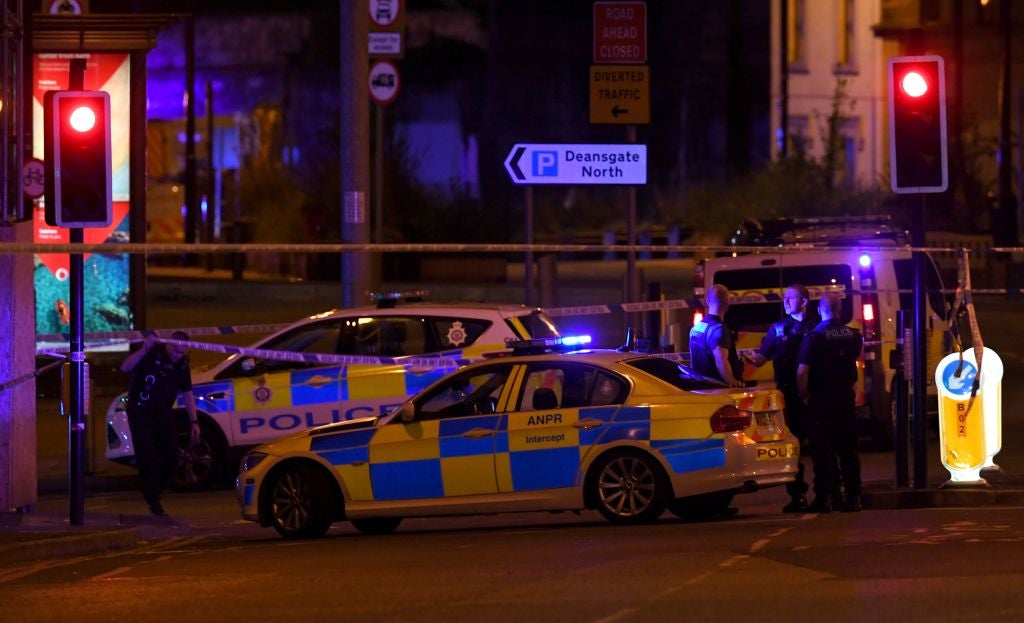Manchester Arena bomber had ‘swagger’ before detonating device at Ariana Grande concert, says survivor
Salman Abedi was ‘walking with purpose’ amid crowds of parents and friends waiting for young Ariana Grande fans

Your support helps us to tell the story
From reproductive rights to climate change to Big Tech, The Independent is on the ground when the story is developing. Whether it's investigating the financials of Elon Musk's pro-Trump PAC or producing our latest documentary, 'The A Word', which shines a light on the American women fighting for reproductive rights, we know how important it is to parse out the facts from the messaging.
At such a critical moment in US history, we need reporters on the ground. Your donation allows us to keep sending journalists to speak to both sides of the story.
The Independent is trusted by Americans across the entire political spectrum. And unlike many other quality news outlets, we choose not to lock Americans out of our reporting and analysis with paywalls. We believe quality journalism should be available to everyone, paid for by those who can afford it.
Your support makes all the difference.The Manchester Arena bomber had “a bit of swagger” before he detonated his homemade device amid young Ariana Grande fans, an inquiry has heard.
Suzanne Atkins was waiting to collect her daughter from the concert on 22 May 2017, when Salman Abedi passed close to her.
“I noticed a young male walk about a metre in front of me,” she said. “He was stooped and had a bit of a swagger about him.”
Ms Atkins, a college lecturer, said she noticed the shape of Abedi’s back, where he was carrying a heavy rucksack containing a heavy bomb loaded with shrapnel.
“His clothes just blended in like a student, but he was walking with a purpose and his shoulders were hunched over.” she added.
Read more:
“He looked out of place in amongst a crowd of young girls and families whilst everyone else was looking around and towards the exits. He just seemed to be different and have a purpose, knowing where he was going.”
Abedi detonated his device moments later, killing himself and 22 victims as young as eight.
Giving evidence to the public inquiry into the bombing on Tuesday, Ms Atkins said her experience of the blast was seeing an orange flash and then feeling “like something had rolled into me that was burning, into my legs”.
Ms Atkins and her mother were knocked to the ground by the blast, but she described coming around and going on “auto-pilot” trying to find her daughter and her friend amid chaotic scenes in the aftermath of the bombing.
She described searching the floor of the City Room, where Abedi detonated his bomb, before calling her daughter “over and over” before getting through and confirming she was unharmed.
Ms Atkins was one of several survivors giving evidence to the public inquiry, which is investigating the lead-up to the attack and emergency response.
The hearing was told how best friends Amelia “Millie” Tomlinson and Lucy Jarvis were walking out of the concert with their arms linked as the explosion went off.
Ms Tomlinson, now aged 21, from Wigan, told the public inquiry she felt a “warm gush of air” before her body was thrown around.
“I opened my eyes, I could see loads of smoke,” she added. “I could see loads of people on the ground, like the victims, on the ground. I could see Lucy and me had been blown apart.
“We both just looked at each other and knew something really bad had happened and we managed to get up and run back through the doors.
“I remember feeling like I could not run, but did not know why. A bolt had gone through my shoe and foot.”
Ms Tomlinson suffered injuries to her fingers but managed to call her friend’s mother to say there had been a bombing, before being assisted by a first aider who worked for hte venue.
Ms Jarvis collapsed with shrapnel wounds to her ankles, unable to walk and bleeding heavily, and felt she was “going to die”.
She told the inquiry how she asked Manchester Arena technician John Clarkson to take off her shoes and ease the pain of her ”throbbing feet“, but he told her to keep them on and ”probably” prevented her from bleeding to death.

Mr Clarkson and engineer colleague Paul Worsley sat with Ms Jarvis, holding her hand as she awaited treatment.
“I remember [armed police] saying that they needed to leave and that paramedics would take over or other people would take over,” she said. ”I think they were like 'we can't leave this girl on her own', so they refused to leave.“
Ms Jarvis was later taken to a casualty triage area at Manchester Victoria station, where she recalled lying on the floor for ”nearly two hours“.
She told the inquiry: ”I could hear people talking around me, a lot of people crying and like shouting they needed help or they needed like pain relief and obviously they couldn't give them that at the time.”
Ms Jarvis was later taken to Salford Royal Hospital, undergoing 14 hours of surgery and spending eight weeks in the hospital.
She has not fully recovered yet from multiple shrapnel wounds and injuries including to her upper and lower legs, left upper arm and forearm, bladder and kidney, as well as blood clots on her lungs. The inquiry continues.
Additional reporting by PA